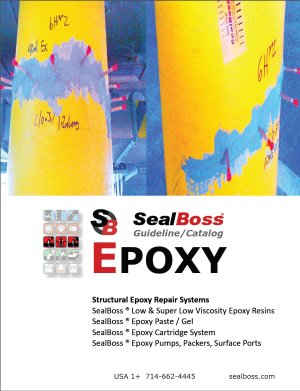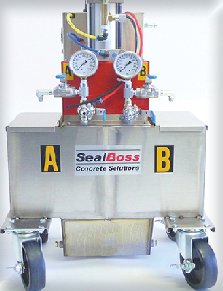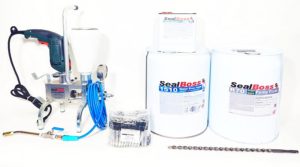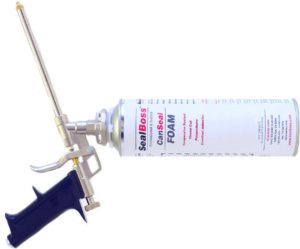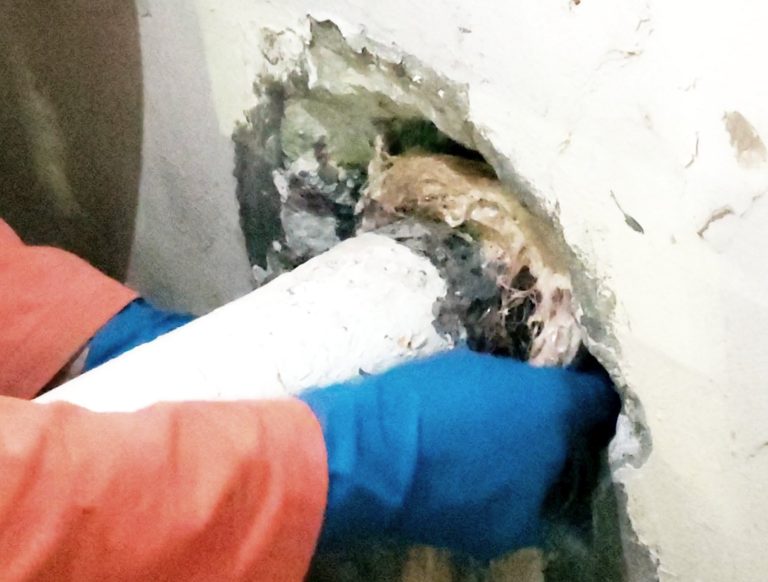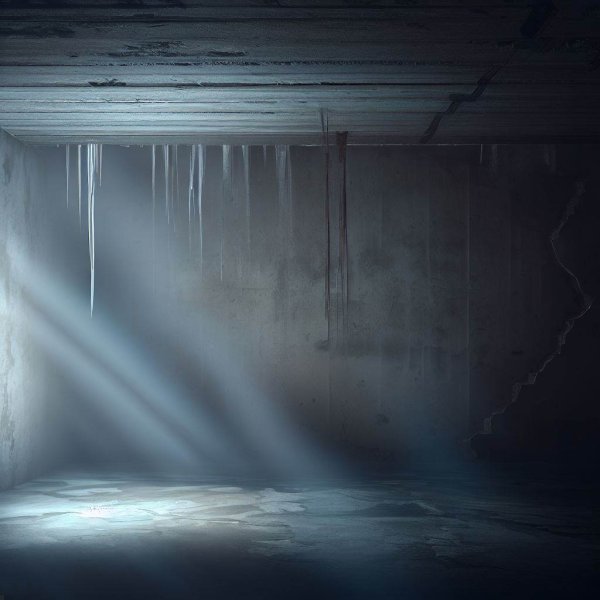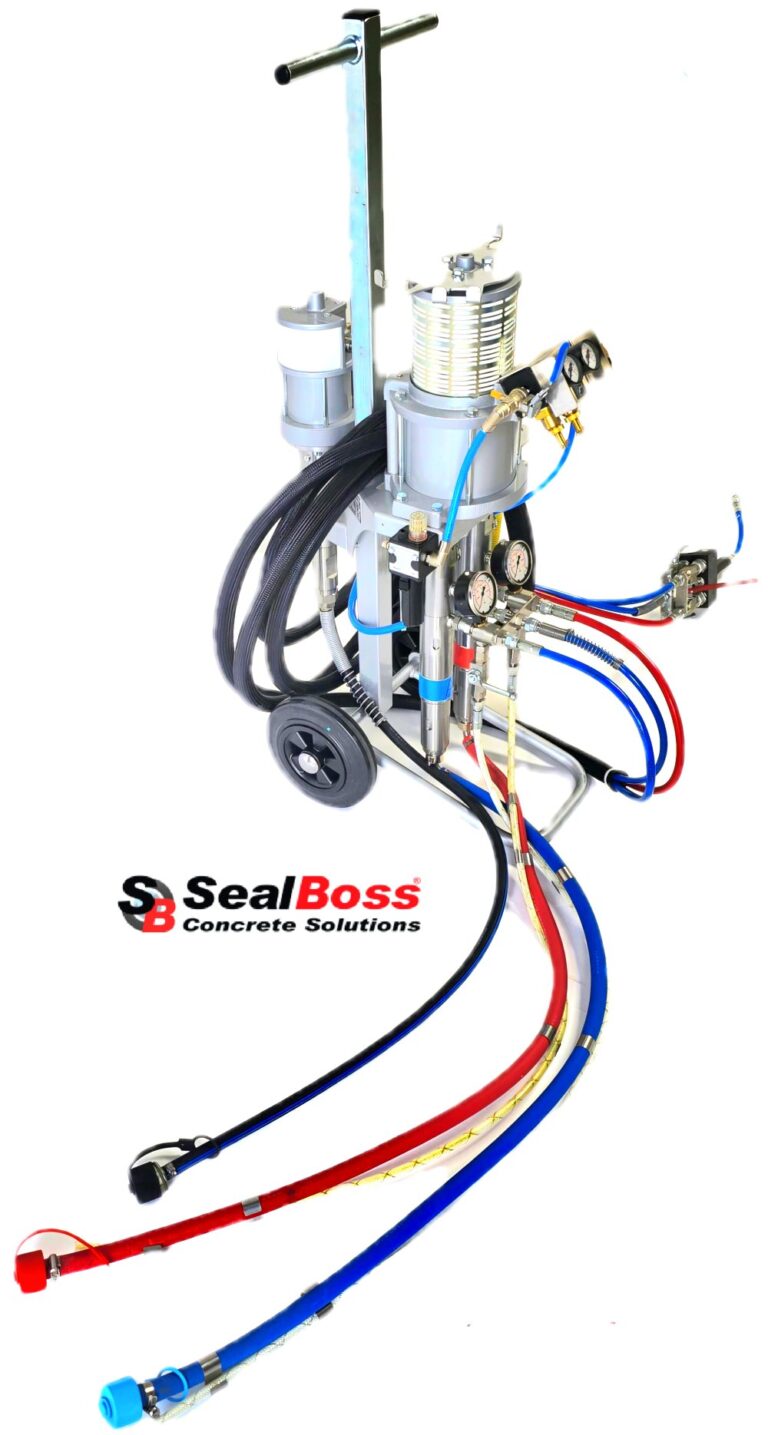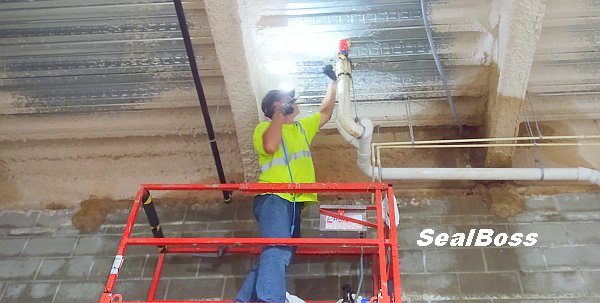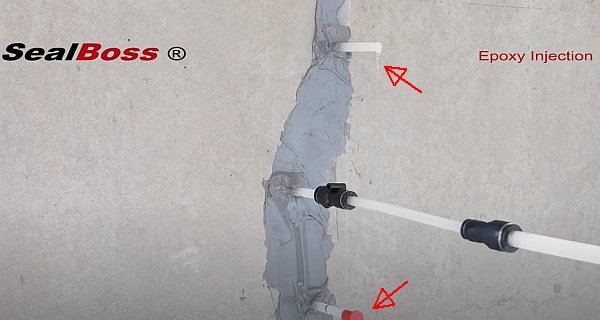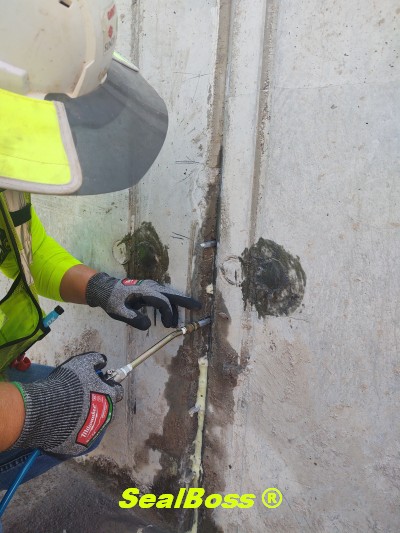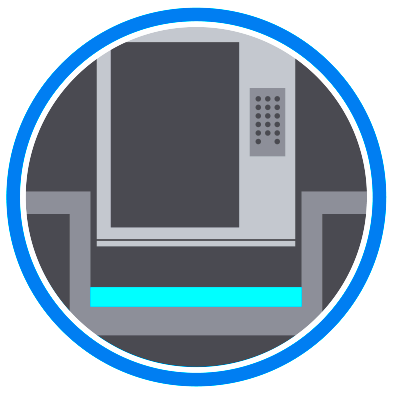Parking Garage Crack Injection | Leak Sealing Repair
Parking Garage Crack Injection
Structural and Leak Sealing Repairs
Introduction:
For effective and long term parking garage crack injection repair, the use of specific injection products for waterproofing and structural crack repair is pivotal.
For leak sealing, polyurethane foam resins, hydrophilic gels, and acrylate / acrylic gels are commonly employed. These resins, when injected, either react with water to form a foam that expands or create a gel product respectively, filling voids and sealing against further water ingress. This method not only prevents water penetration but also adds to the structural integrity of the parking facility.
On the other hand, for structural strength crack injection, epoxy resins are predominantly used. These resins are known for their high-strength bonding capabilities, effectively sealing cracks and restoring the concrete’s original strength. Epoxy resins are particularly advantageous in load bearing environments, providing strength and restoring the concrete’s structural integrity.
Both types of injection product groups are crucial in extending the lifespan of parking structures, ensuring they remain safe and functional for daily use.
Parking Garage Crack Injection Technology
For over three decades, SealBoss Crack Injection Systems have been at the forefront of providing effective solutions for structural repairs and sealing leaks in cracks and joints within parking garage structures. These systems have proven successful in not only preventing water ingress but also in preserving the integrity and functionality of parking facilities.


How to Seal Leaks in Voids, Cracks, Joints, and Seal Around Beams
In a technical support role for a leading infrastructure repair company, the job often involves providing assistance to clients on a wide array of repair projects. These projects range across a diverse spectrum, including concrete repair, waterproofing, slab lifting, soil stabilization, and permeation grouting.
Recently, there was an instance of providing consultation to a contractor. The focus was on addressing water leaks by injecting materials into voids, cracks, joints, and beam pockets that had previously been treated with mastic grout.
The area where the leaks persisted were directly below the sidewalk where the concrete meets the asphalt driveway. After inspecting the above ground conditions closely it was determined that the main source of the water intrusion were gutter downspouts. There were no drains installed to manage the directional flow of rainwater away from the structure.
Now that the source and path of water ingression had been established, polyurethane pressure injection of the affected areas was confirmed to be the correct solution to seal the leaks.
The first areas that needed to be sealed were leaking beam pockets which had been previously filled with a mastic patch grout. Over a 30 year period there had been multiple previous attempts by various contractors to repair the leaking areas. No records were available on the various works that had been performed.
It was decided to inject through the wall to the back side of the structure to cut off any water before it could find its way into the beam pockets. This method combines void fill and permeation grouting as product is injected beyond the structure into a space that in this instance is confined by concrete / steel, asphalt and dirt. As the foam disperses under pressure injection and during expansion, it partially migrates / permeates also into the dirt further enhancing the ability to seal the void.
Using two strategically placed SealBoss Evolution 13-100 AL packers, the contractor injected 1510 Water Stop Foam, catalyzed with 10% 15x Accelerator, at several intervals, permitting the resin to expand to a dense foam creating a seal and protecting the beam pocket from any water intrusion from behind the wall.
The injection process was monitored from the inside and outside and the contractor stopped injection once air bubbles and water were observed coming up through the asphalt driveway. Expanding foam displaced water in the affected area. Injection was continued at a slow rate until water displacement finished and increasing resistance indicated full penetration.
Next, the contractor injected all visible and leaking cracks some of which at one point had been injected with a structural / rigid epoxy which had failed. Reason of epoxy failure was determined as either lack of bond due to actively leaking cracks during epoxy injection and/or failure due to crack movement such as contraction and expansion. Polyurethane injection is the preferred method to address actively leaking and water bearing cracks, especially in areas where structural repairs are not necessary. The two foot thick wall was injected with 1510 leak-seal foam in intervals till the crack showed refusal of the resin.
Epoxy Versus Polyurethane Comparison – click here.
On-site support from knowledgeable and experienced technical reps is available upon request, I personally cover from North Dakota and Minnesota down through Texas. Call us with any questions, we look forward to helping you find a solution.
Materials and Tools Used
- SealBoss 1510 Leak Sealing Foam
- SealBoss 15X Accelerator
- SealBoss 13-100 Evolution Packers
- SealBoss R70 Pump Cleaner
- SealBoss P2002 Injection Machine
Related Articles
Structural Parking Garage Repairs with High Strength Epoxy Resins
Learn More
Please don’t hesitate to call us at 714-662-4445 with any questions, or request to be contacted here, we look forward to helping you find a solution. On-site support from knowledgeable and experienced technical reps is available upon request.
Check out our Leak Sealing Repair Kits.
- Polyurethane Grout Injection Pump
- Polyurethane Foam Injection Pump
- Easy To Use
- Easy To Cean
- Easy To Maintain
- Modular, Compact &
- Sturdy Design
- Single Component
- Electric Drill Operated
- Heavy Duty For Daily Use
- Pressure Gauge, Hose Set, Hopper Included
- Recommended For Beginners & Injection Pros
- > 5000 PSI Injection Pressure Possible




